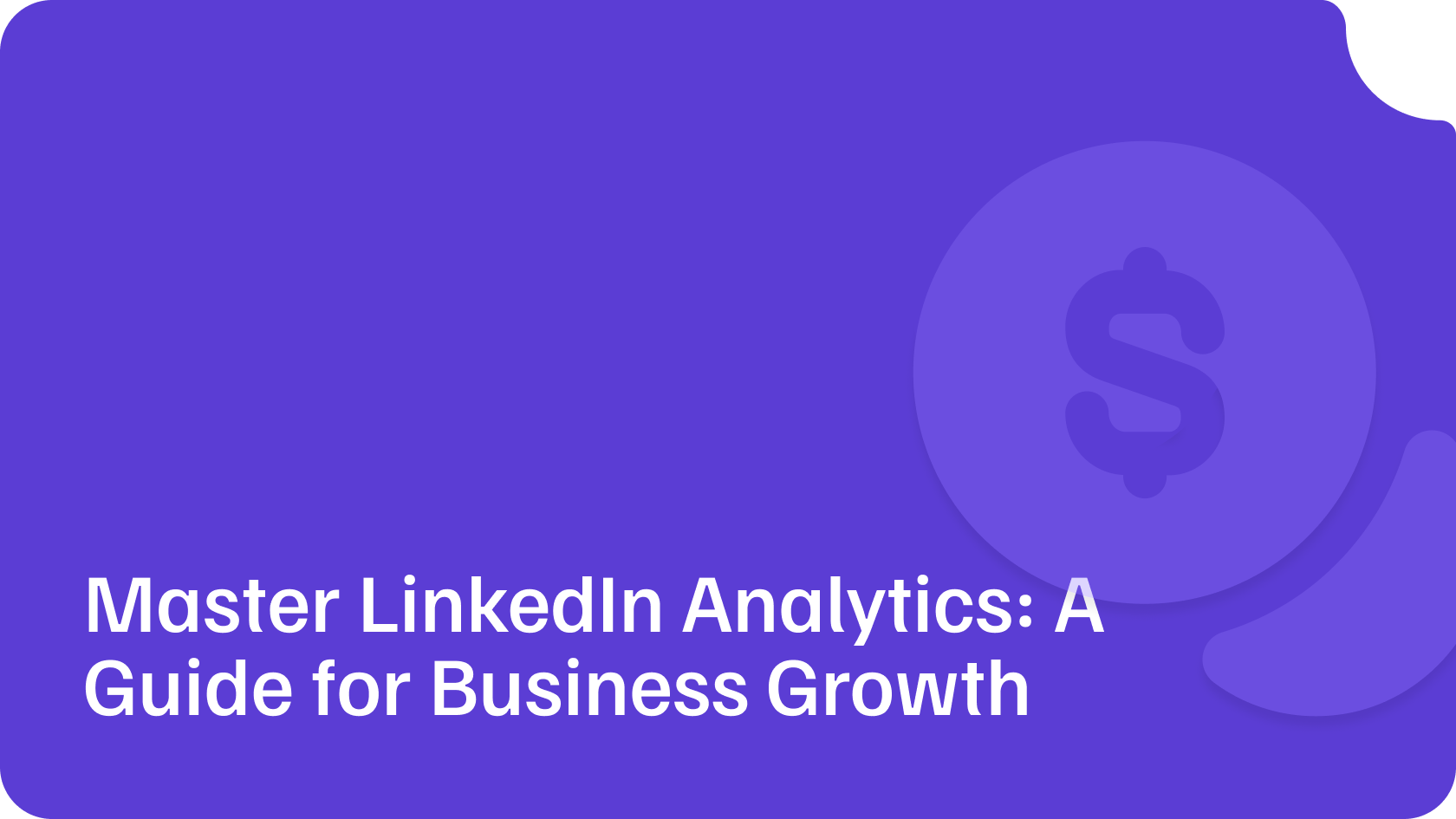Understanding LinkedIn business page metrics: A comprehensive guide
LinkedIn remains a vital tool for businesses looking to expand their network, increase brand visibility, and attract potential customers or clients. To use LinkedIn effectively, understanding and analyzing your business page's performance is essential. Our guide will walk you through the metrics available on your LinkedIn business page and how to access and interpret them.
Accessing your LinkedIn business page analytics
To begin, navigate to your company's main page on LinkedIn by entering the URL, for example, https://www.linkedin.com/company/yourcompanyid.

Once there, you'll notice various statistics displayed on the right side of the page, which summarize the last 30 days of activity. These include:
- Search Appearances: The number of times your page appeared in search results.
- Unique Visitors: The total number of unique individuals who visited your page.
- New Followers: The number of new followers your page has gained.
- Post Impressions: The total number of times your posts have been seen.
- Custom Button Clicks: The number of times visitors clicked any custom buttons you've added to your page (such as "Contact Us" or "Sign Up").
For a more detailed analysis, click on the 'Analytics' tab located on the left side of the same page.

This section offers in-depth insights and is divided into six main tabs:
Content:
This tab provides an overview of the reach of your posts. It also allows for the tracking of specific metrics related to your content's performance, such as:
Impressions: This measures how many times your posts have been displayed to users on LinkedIn. It's a key metric to understand the breadth of your content's reach. A higher number of impressions indicates that your content is being distributed widely across the platform.
Unique Impressions: Unlike total impressions, unique impressions count the number of distinct individuals who have seen your post. This metric helps you gauge the actual reach of your content beyond repeated views by the same users.
Clicks: This represents the total number of times users have clicked on your content. Tracking clicks can help you understand what content drives curiosity and action, guiding future content creation.
Reactions: LinkedIn allows users to react to posts with different emotions (like, celebrate, love, insightful, curious). The total reactions measure how your audience is emotionally engaging with your content, providing insight into what resonates best.
Comments: The number of comments on your posts is a direct indicator of engagement and conversation around your content. More comments typically mean that your content is stimulating discussion and engagement within your community.
Reposts: This metric tracks the number of times your content has been shared or reposted by others on LinkedIn. Reposts can significantly extend the reach of your posts and indicate that your content is valuable and share-worthy.
Engagement Rate: This crucial metric is calculated by dividing the total number of interactions (clicks, reactions, comments, and reposts) by the number of impressions, then multiplying by 100 to get a percentage. A higher engagement rate suggests that your content is not just being seen but is also compelling enough to provoke interaction.
Visitors:
Here, you can see the total number of visits to your corporate page and detailed statistics for each section.
Under the Visitors tab, you'll find data that helps you understand who is visiting your LinkedIn page:
- Page Views: The total number of times your LinkedIn business page was viewed.
- Unique Visitors: The number of distinct individuals who have viewed your page, regardless of how many times they visited.

- Demographics: Detailed breakdowns of your visitors' job functions, industries, geographical locations, and company sizes. This information is invaluable for tailoring your content and engagement strategies to your audience's attributes and preferences.

Look for patterns in visitor demographics to tailor future content and to identify new market segments that may be engaging with your LinkedIn page.
Followers:
This section focuses on the statistics related to your page's followers, including demographic insights, helping you understand who is engaging with your content.
- Follower Trends: Changes in the number of followers over time. This can help you gauge the effectiveness of your content and engagement strategies.

- Demographics: Similar to visitor demographics, this includes the followers' job functions, industries, locations, and company sizes. Comparing your followers' demographics to your visitors' can provide insights into whether your content is reaching and resonating with your target audience.

Leads:
This tab is crucial for businesses looking to generate leads via LinkedIn. It details individuals who have expressed interest by filling out a form on your LinkedIn page. This often includes contact information and other details provided by the potential leads. (note: you need to have this feature enabled).

Competitors:
Finally, the Competitors tab offers a comparative perspective:
- Benchmarking: See how your page's performance stacks up against similar companies in terms of followers, post frequency, and engagement.
- Trending Content: Identify what content is performing well for competitors, which can inspire your content strategy.
- Follower Growth: Compare the rate of new followers your competitors are gaining to your own.

Understanding your competitive landscape on LinkedIn can help you identify industry trends, effective content types, and areas for improvement in your own strategy.
By regularly monitoring and analyzing these metrics, businesses can gain a comprehensive understanding of their LinkedIn page's performance. This insight allows for the optimization of content, engagement strategies, and overall online presence, leading to increased visibility and growth opportunities on LinkedIn.
Сonsistent monitoring and adjustment based on these metrics can significantly improve your LinkedIn business page's effectiveness. Good luck from Peoplr team.








